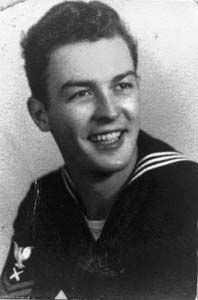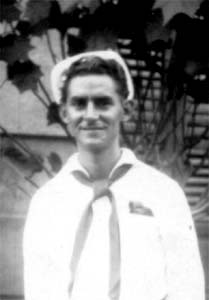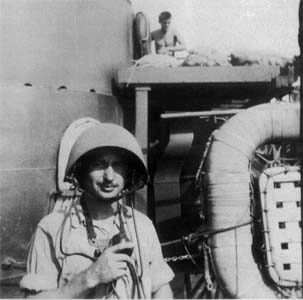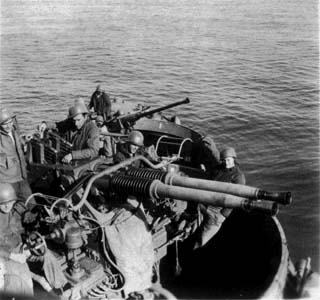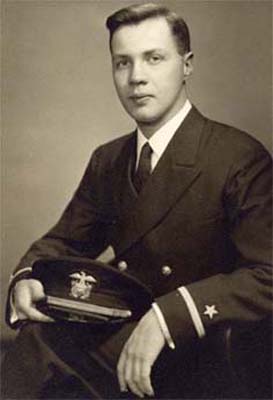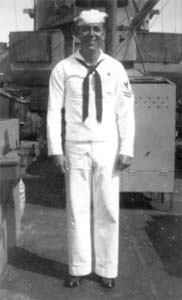| From the ATF-108 PAKANA | |||
|
Martin Tschirhart - BM2c He took the lead of a voluntary motor whaleboat crew helping rescue USS BUSH survivors. His diary entry noted, "A lot of them we saw were dead and didn't have time to bother with their bodies .... A lot of them were blind from salt water and flash burns." |
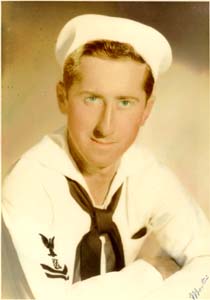 Martin Tschirhart |
||
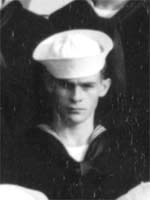 George Davis |
George Davis - EM2c Acting as engineer in the whaleboat with Martin Tschirhart, George recalls, "The skipper said he'd leave the mast light on for us, an action which really took guts. There were still enemy planes in the area." George worked and worked on one BUSH sailor that was in distress, and the sailor lived thanks to George's direct attention. |
||
|
Donald Berg - MoMM1c Gave artificial respiration to a BUSH survivor in bad shape. Recalling the incident in a July 1945 letter Don Berg wrote, "All the time another fellow and I were working on him, I was wishing I had learned how better in school, because now I was afraid that if I didn't do it right, I might kill him. After a couple hours, he pulled out of it and felt pretty good." |
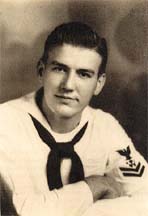 Donald Berg |
||
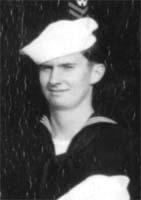 Paul Wing |
Paul Wing - S1c Among other things, Mr. Wing worked hard to save a young BUSH sailor name David Davey. "I was giving A. R. to a young man, the name on his shirt was Davey. Our Corpsman came by at one point and said he thought he felt a faint pulse, but after about two hours he told me to give up as the man had passed. The name Davey has stuck in my mind all these years." |
||
|
Stephen J. Chromy - CM1c One of the volunteers in the PAKANA whaleboats. |
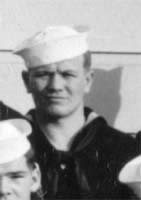 Stephen J. Chromy |
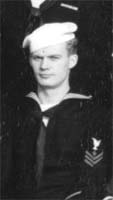 Don Merritt |
Don Merritt - PhM1c The PAKANA's one and only Pharmacist's Mate (their "Corpsman"). |

